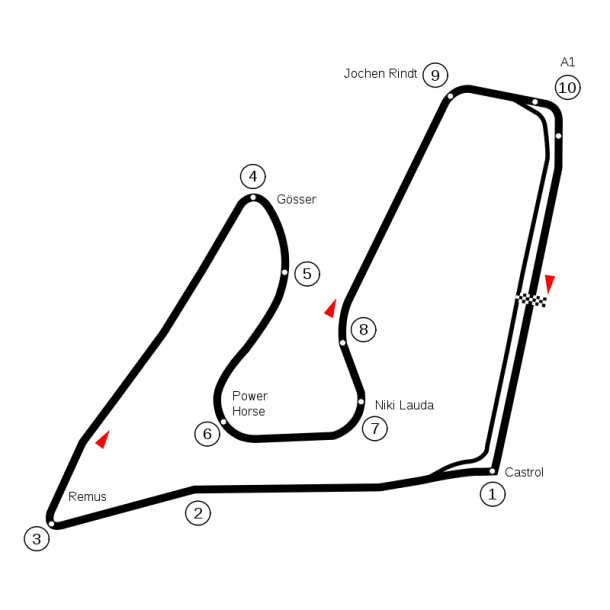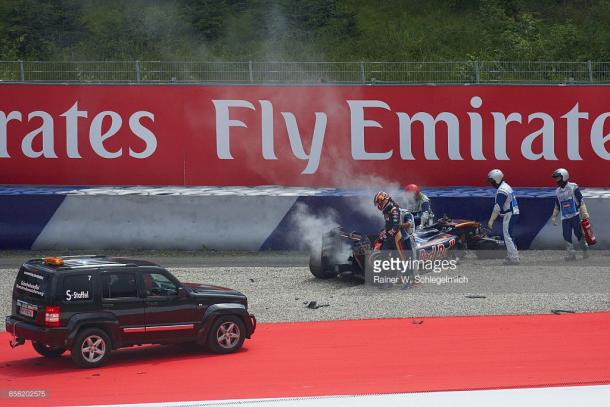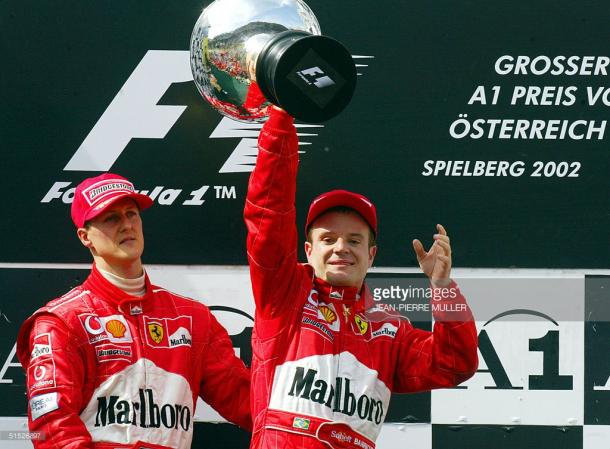Once a year, the Styrian mountains and surrounding hills come alive with sound of Formula One engines, for the Austrian Grand Prix.
Having had several periods off the calendar, F1 returned to Austria in 2014, after an 11 year absence. The circuit in question, the Red Bull Ring remains on the site of the original Osterreichring, the track that held the Grand Prix from 1970 up until 1987. It was a further ten years until the redeveloped track, simplified and rebadged as the A1 Ring, returned to the sport.
But, due to financial and infrastructural reasons, the 2003 race was to be its last, until Red Bull struck a deal with Bernie Ecclestone to bring the event back for 2014. For the time being, it looks to be a more permanent addition.
Still holding many of its original characteristics, the eight cornered, 70 second lap poses many challenges for the drivers. A mix of power dependent straights, high and low speed corners means that finding a consistent and fast setup can be difficult. However, a responsive front end is a must for a quick lap time.

Due to the location, there are plenty of elevation changes, the run up to the tight Remus Kurve of Turn 2 the most notable climb. Whilst that may be unfavourable for drivers, the scenic backdrop is a welcome antidote; however, questions can be asked of how much the drivers can see of it during race day!
Track layout
Having dipped into a small trough whilst entering the pit straight, open the DRS and climb up the shallow hill towards Turn 1, the Castrol Edge turn. The braking point can be a tricky one to spot, leave it as late as you dare, flick the car into the right hander and don't use too much of the exit kerb. Drivers used to purposefully run onto the astroturf on exit in the early 2000s in order to gain an advantage; do that now, and a nasty raised kerb will chuck you about.
Next, it's all about the run up to the Remus Kurve. A long climb is ahead, the track sweeping to the left before straightening back up before the braking zone. 110 metres, slow the car down to second gear, crank the steering lock to the extreme right and ease the throttle in gradually.

Open the DRS and fizz back down the hill, coaxing the car back to the left hand side of the track. Close to the bridge, get the brakes on, turn into another right hander - the third of six on the circuit - and wait for the car to bite. Watch your speed, as the camber of the corner will look to take you into the outside gravel trap.
Move back to the right on exit, dab the brakes and fly into the first proper left hander of Rauch in fourth gear, feathering the throttle as you go. As soon as you see the exit kerb, get back on the power for good before kissing the brakes by the escape road and attacking the left-right Wurth chicane at close to full throttle.

We're near the end of the lap now. The right hander of Rindt - named after Austria's posthumous champion of 1970 - is another corner that requires commitment and control in equal measure.
A lift should scrub off enough speed to get you through it - be wary on exit, an invalidated lap time and another raised kerb are waiting for you, should you drift four wheels over the white line.
When you are parallel to the chevroned pit lane barrier, hit the brakes again, drop down to fourth and deal with the final corner. Open the DRS and fly to the line.
Statistics
Most wins for a driver: Mika Hakkinen, Michael Schumacher, Nico Rosberg - 2 each
Most wins for a constructor: McLaren, Ferrari, Mercedes - 3 each
Lap Record: 1:08.337 - Michael Schumacher, Ferrari, 2003
Did you know?
The most controversial edition of the Austrian Grand Prix came in the 2002 season, when Rubens Barrichello was ordered to let Ferrari teammate Michael Schumacher through to take the win, on the very last lap.

Schumacher was booed up on the podium, but let Barrichello take the top step and the winners trophy. Both Schumacher and Ferrari had to pay $1,000,000 to the FIA for breaching the sporting law regarding the podium ceremony.
Team orders were subsequently banned, but have been utilised since - most controversially at the 2010 German Grand Prix, with Ferrari drivers Felipe Massa and Fernando Alonso swapping places, in Alonso's favour.









































